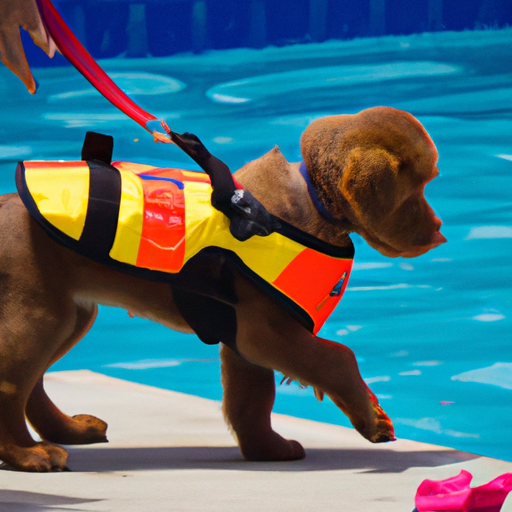As a caregiver, your role is essential in ensuring the safety and well-being of your beloved puppy. One important skill you could teach your little furry friend is swimming. This might raise the question, “When can I teach my puppy to swim?” This guide will help you understand the best time and methods to introduce your puppy to the water.
1. Understanding Your Puppy’s Breed
Different breeds have different affinities for water. Some breeds are natural swimmers while others may need more encouragement and training.
| Breed | Swimming Ability |
|---|---|
| Labrador Retriever | Natural Swimmers |
| Golden Retriever | Natural Swimmers |
| Poodle | Natural Swimmers |
| Bulldog | Needs Assistance |
| Basset Hound | Needs Assistance |
| Boxer | Needs Assistance |
2. The Right Age to Start
While puppies may start swimming as early as a few weeks old, it’s best to wait until your puppy is at least 3 to 4 months old. This is the time when they have received their necessary vaccinations. However, remember that every puppy is unique and some might need more time to be ready for this new experience.
3. Preparing Your Puppy for Swimming
Before taking your puppy for a swim, ensure you’ve prepared them adequately. Here’s how:
- Introduce Water Early: Let your puppy explore puddles, or play with water in a shallow dish. This helps to build their confidence.
- Use Floatation Devices: Equip your puppy with a doggie life jacket. This can ensure their safety while they’re learning to swim.
- Keep the Water Warm: Puppies can get cold easily, so it’s best to introduce them to warm water.
4. Teaching Your Puppy to Swim
Once you have prepared your puppy adequately, it’s time to teach them how to swim.
- Start in shallow water: Carry your puppy into shallow water, let them get a feel for it, and gradually introduce them to deeper water.
- Use toys or treats: Encourage your puppy to swim towards a toy or treat.
- Stay calm and patient: Your puppy might be scared initially. Your calmness can reassure them.
5. Safety Precautions
Your puppy’s safety should be your top priority. Here are some safety tips:
- Never leave your puppy unsupervised in the water
- Rinse your puppy after swimming to remove any chlorine or salt
- Make sure your puppy knows how to get out of the water safely
Frequently Asked Questions
Q: Can all puppies swim naturally?
No, not all puppies can swim naturally. Some breeds are natural swimmers, while others may need more training.
Q: What should I do if my puppy doesn’t like water?
Be patient and don’t force them. Gradually introduce them to water, and make the experience fun and rewarding.
Q: How often should my puppy swim?
Start with short swimming sessions and gradually increase the duration. However, make sure your puppy gets plenty of rest between sessions.
Q: Can my puppy swim in a pool?
Yes, but ensure the water is warm and the chlorine levels are safe. Also, make sure your puppy knows how to get out of the pool safely.
Q: Is a life jacket necessary for my puppy?
Yes, a life jacket is recommended, especially for puppies that are learning to swim or breeds that are not natural swimmers. It ensures their safety in the water.
By following this guide, you can ensure a positive and safe swimming experience for your puppy. Remember, patience and encouragement are key in teaching your little friend this new skill. Happy swimming!



